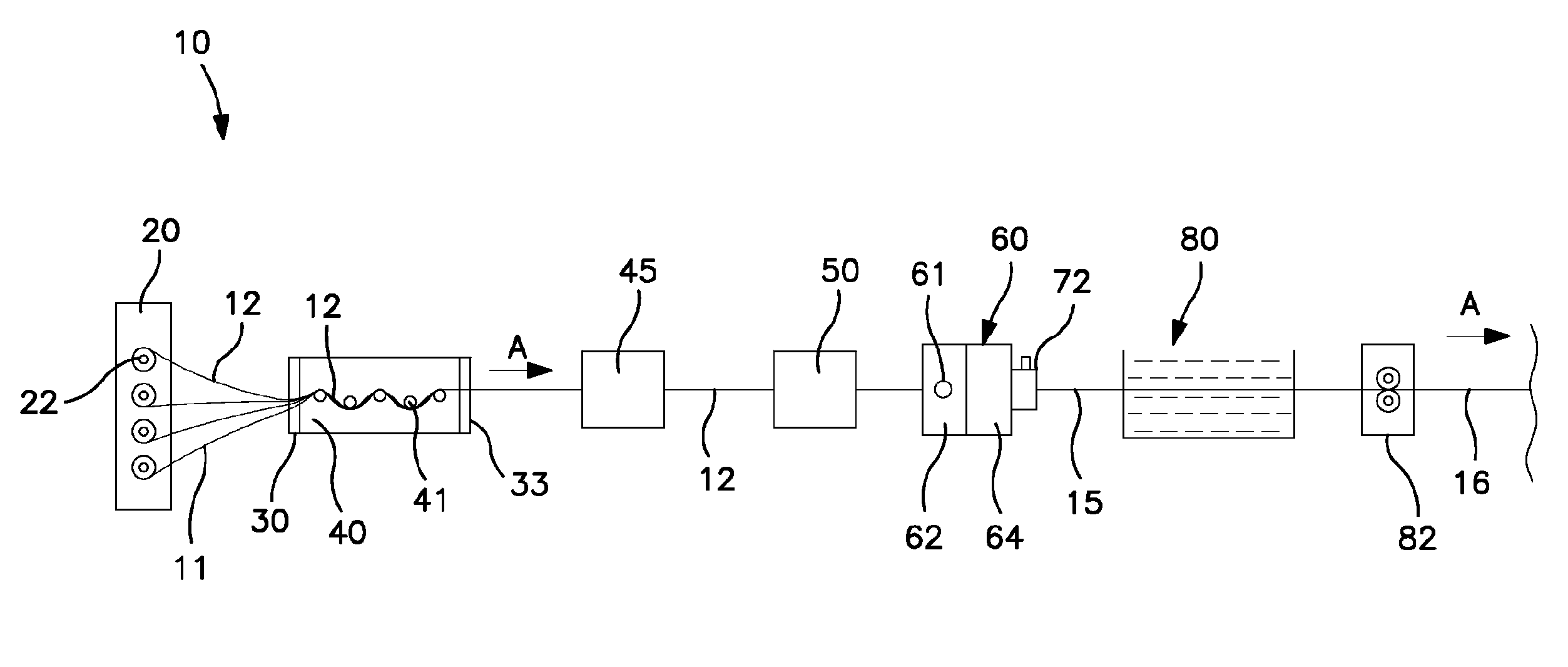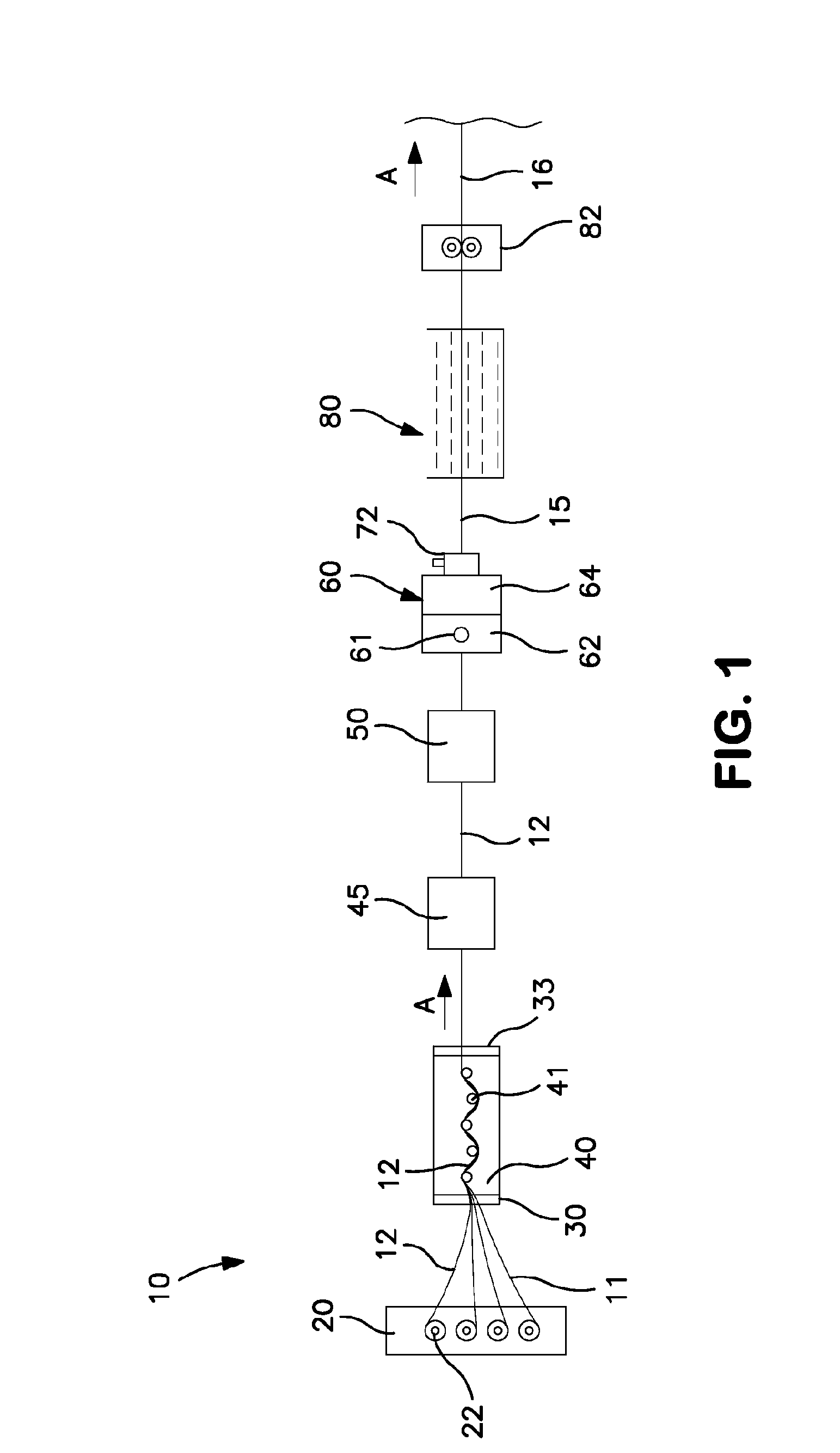Method for Forming Reinfoced Pultruded Profiles
- Summary
- Abstract
- Description
- Claims
- Application Information
AI Technical Summary
Benefits of technology
Problems solved by technology
Method used
Image
Examples
example
[0097]Continuous fiber ribbons were initially formed using an extrusion system as substantially described above and shown in FIGS. 2-3. Glass fiber rovings (E-glass, 2200 tex) were employed for the continuous fibers with each individual ribbon containing three (3) fiber rovings. The thermoplastic polymer used to impregnate the fibers was acrylonitrile butadiene styrene (ABS), which has a melting point of about 105° C. Each ribbon contained 60 wt. % glass fibers and 40 wt. % ABS. The resulting ribbons had a thickness of between 0.2 to 0.4 millimeters and a void fraction of less than 1%.
[0098]Once formed, the ribbons were then fed to an extrusion / pultrusion line operating at a speed of 5 feet per minute. Prior to consolidation, the ribbons were heated within an infrared oven (power setting of 160). The heated ribbons were then supplied to a consolidation die having a U-shaped channel that received the ribbons and consolidated them together while forming the initial shape of the profil...
PUM
| Property | Measurement | Unit |
|---|---|---|
| Fraction | aaaaa | aaaaa |
| Thickness | aaaaa | aaaaa |
| Thickness | aaaaa | aaaaa |
Abstract
Description
Claims
Application Information
 Login to View More
Login to View More - R&D
- Intellectual Property
- Life Sciences
- Materials
- Tech Scout
- Unparalleled Data Quality
- Higher Quality Content
- 60% Fewer Hallucinations
Browse by: Latest US Patents, China's latest patents, Technical Efficacy Thesaurus, Application Domain, Technology Topic, Popular Technical Reports.
© 2025 PatSnap. All rights reserved.Legal|Privacy policy|Modern Slavery Act Transparency Statement|Sitemap|About US| Contact US: help@patsnap.com



